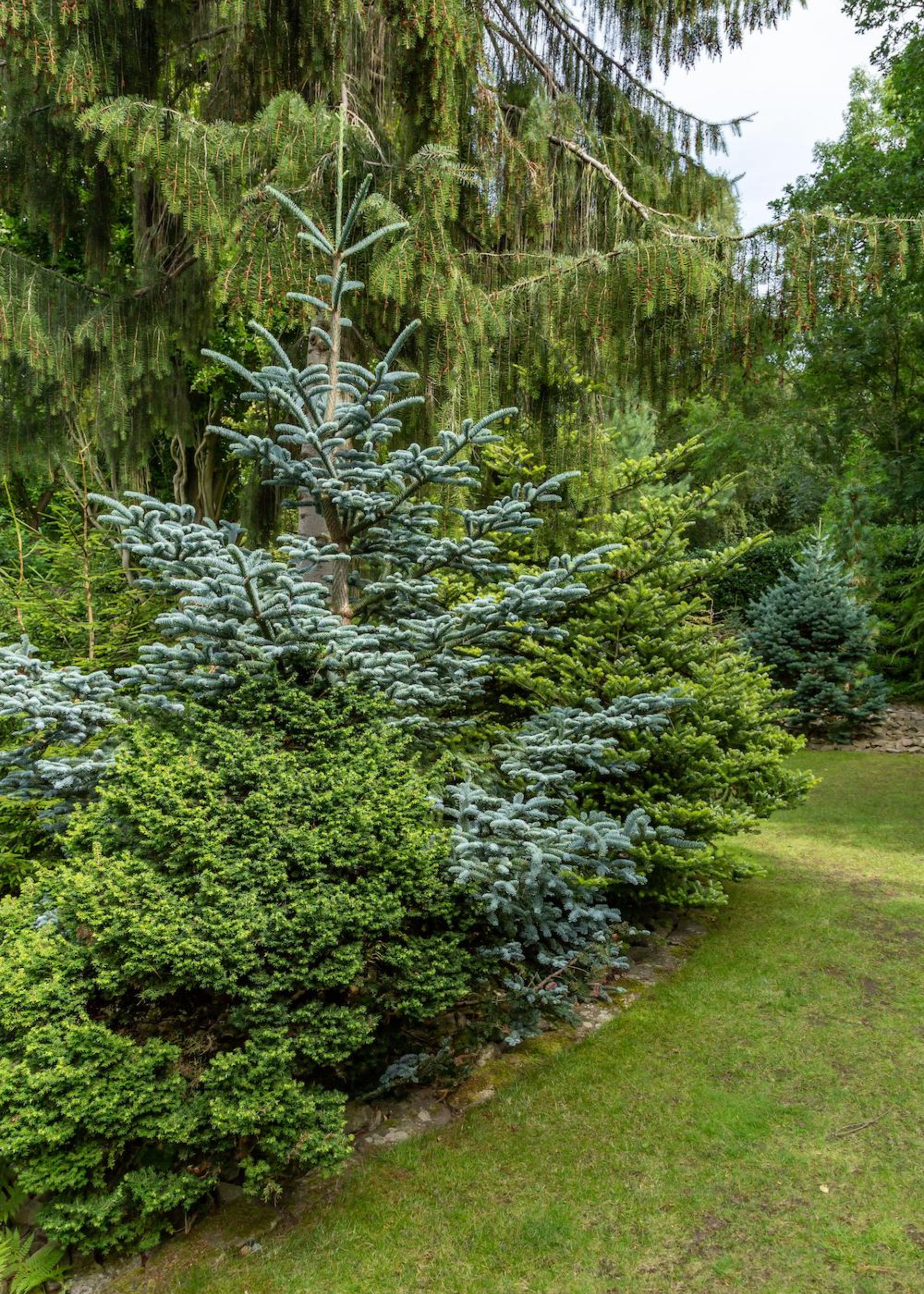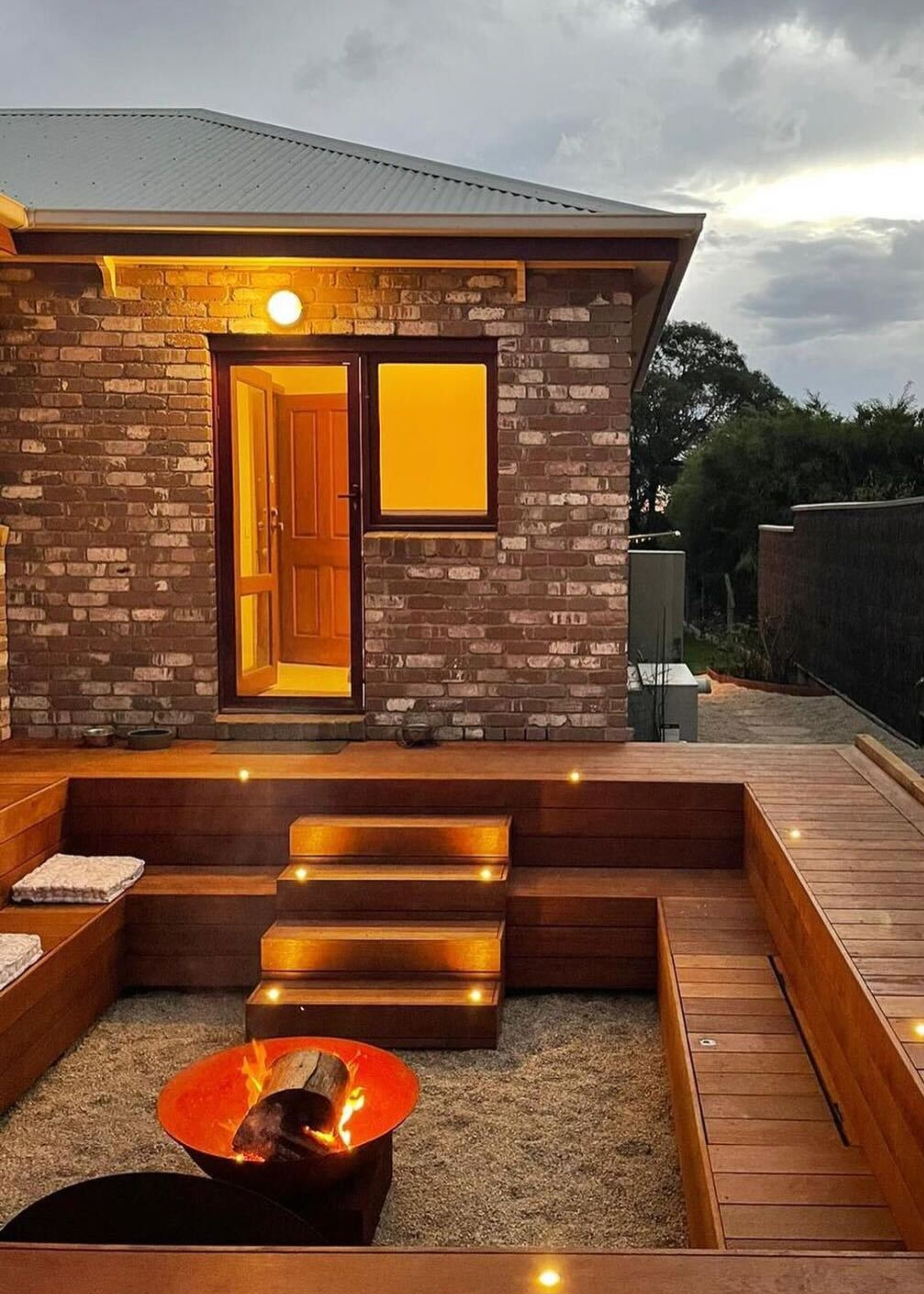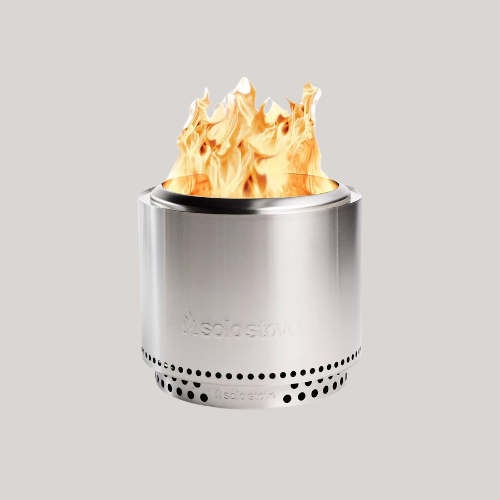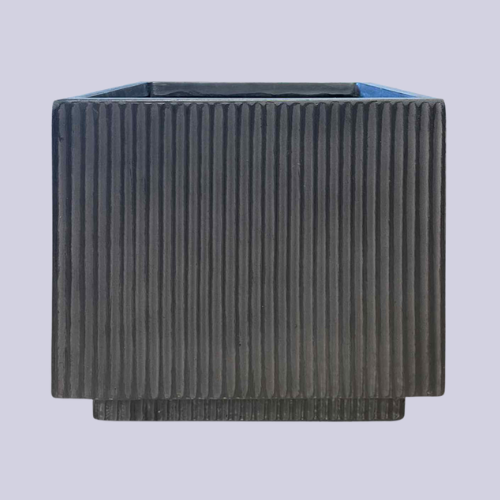5 Landscaping Features That Might Be Great for Summer, But That You'll Always Regret Come Winter
Your garden shouldn't be a four-month wonder. Take our experts' advice for building a garden that looks good all year round


When it comes to our gardens, there's no denying that most of us tend to be fair-weather friends. In the summer months, you spend every minute out there, referring to it as your 'sanctuary' or 'haven', then by the end of October, it may as well have never even existed.
While a large reason behind this flighty relationship does, of course, fall upon the drop in temperature, there is also another element at play, and that is the fact that too many of our landscaping ideas are centered solely around the summer, leaving us with an outdoor area that isn't fit to stand up to the frostier months.
But there's no reason your garden shouldn't be able to do both. After all, is there any other area of your home that you'd happily close for business for half of the year? No. And that shouldn't be the case with your garden, either. These tips will help you identify all the landscaping mistakes that have been holding you back from achieving your own personal winter wonderland in your backyard.
1. Tropical Plants

There's an obvious appeal to a garden full of beautiful, exotic plants, but as we begin to move towards a more sustainable, rewilding approach to planting, we're becoming increasingly aware of the downfalls of these tropical plants.
Nate Fox, lead designer at Foxterra Design, says, "Non-native ornamental grasses, tropical-looking plants like elephant ears or cannas, and high-maintenance annual beds create stunning summer displays."
However, he continues, "Come winter, they collapse into soggy messes, die back completely, leaving holes in your design, and leave you staring at muddy patches of bare earth."
The issue with these summertime displays is that they don't take into consideration the necessary maintenance needed to keep the look up through the winter months, as Nate explains, "When you optimize only for warm-weather perfection, you're setting yourself up for months of visual disappointment and expensive maintenance headaches."
The Livingetc newsletters are your inside source for what’s shaping interiors now - and what’s next. Discover trend forecasts, smart style ideas, and curated shopping inspiration that brings design to life. Subscribe today and stay ahead of the curve.
Now, if holes of muddy patches and bare earth don't sound like your idea of a dream garden, Nate has some better ideas instead.
"Evergreens like boxwoods, berry-producing shrubs like winterberry holly, and native perennials like black-eyed Susans that hold their structure are the backbone of a four-season landscape," Nate says, "These elements actually shine when everything else goes dormant, providing structure and beauty year-round."
Foxterra is a luxury-focused pool and landscape design company, crafting hundreds of luxury residential yards; currently across 35 states and counting, as well as in countries like Jamaica, Mexico, Costa Rica, Spain, and more.
2. Water Features

Simultaneously, one of the most desirable garden features, and one of the trickiest to maintain, a water garden idea is, sadly, one of those landscaping trends you'll be sure to regret in the winter months.
"Water features are one of the biggest summer luxuries, but they require foresight," notes Loren Taylor, landscaping expert and owner of the Soothing Company.
In consistently warm climates, a water feature can be a no-brainer addition, but when you've got extreme temperature drops to think about, you may want to reconsider that fountain you've been eyeing up.
As Loren explains, "A sparkling fountain or pond looks beautiful in the heat, but can become a liability in freezing weather. Pumps seize, water stagnates, or worse, ice cracks the basin."
However, this doesn't mean you need to give up on the dream entirely. Loren recommends, "designing water features that remain attractive even when still — think of a shallow reflective pool that glints under soft winter light, or a dry riverbed of smooth stone that provides form without risk. That way, the feature still feels like part of the landscape’s design, not a forgotten summer ornament."
3. Large Ceramic Pots

This one may sting... but the experts warn that those ceramic planters that looked absolutely gorgeous in June may not be quite so appealing come January.
"Big terracotta or ceramic planters look beautiful in summer, but they don’t cope well with frost. When soil freezes, it expands, cracking pots and damaging roots," explains Hugh Barlow, from East Riding Horticulture.
Materials like ceramic and terracotta, although beautiful, don't have the durability to stand up to the soil expanding against them, leaving open the potential for cracks and fractures. The best outdoor planters look as beautiful in the dead of winter as they do under the August sun.
"Better option: Invest in frost-proof resin or fiberglass containers that can stay outdoors all year. Or skip pots altogether and focus on in-ground planting for more resilience," Hugh suggests.
4. Light and Bright Mulch

While your choice of plants can have an obvious impact on the way your garden looks across the seasons, you'd be remiss to underestimate the significance of your patio flooring ideas as well.
As Loren notes, "Even small details like mulch and stone choice can make a difference."
And it's not just the type of material you choose either; the color of your stone and mulch will further determine how it reacts to changes in temperature. "Light-colored stones or bright mulches might look chic in July, but winter dampness quickly dulls their appeal, turning them grey or mossy," Loren says.
Your paving is particularly at risk during the winter months, as Loren notes, "Gravel and bare soil paths are charming in dry weather, but once snow or rain arrives, they scatter, turn slick, or simply disappear under mud. Permeable pavers or stone slabs are far more reliable, remaining elegant and functional year-round."
5. Neglecting Winter Needs

Sure, a firepit may feel like an unnecessary addition in August, but when you build your garden with only the summer months in mind, you're signing up for a space that you only use for half the year.
The simple addition of some kind of heat source will instantly take your outdoor area from a summer-only hangout to a year-round gathering space.
"It might be easy to forget about that outdoor fire feature and lighting when completing an outdoor project during the warmest, brightest time of year, but when it comes time to be winter, homeowners will regret not having expanded the usability of their space by including a heating feature and lighting," argues Joe Rabione from Oldcastle APG.
Proper garden lighting ideas are essential. "It’s important to keep in mind that it gets much darker much earlier in the Winter, which limits the amount of time you can use the space you invested in greatly," says Joe.
These additions can extend the life of your garden well beyond the summer months. As Nate explains, "Outdoor fire features are also the ultimate winter landscaping investment. They create focal points when everything else has died back, offer warmth that makes outdoor spaces usable year-round, and provide flickering light that brings life to an otherwise dormant garden."
Now that you know the landscaping styles to avoid, the next step to a year-round outdoor area is learning how to properly winterize your backyard, then all that's left is sitting back and enjoying (while suitably bundled up, of course).

Maya Glantz is a Design Writer at Livingetc, covering all things bathrooms and kitchens. Her background in Art History informed her love of the aesthetic world, and she believes in the importance of finding beauty in the everyday. She recently graduated from City University with a Masters Degree in Magazine Journalism, during which she gained experience writing for various publications, including the Evening Standard. A lover of mid-century style, she can be found endlessly adding to her dream home Pinterest board.


